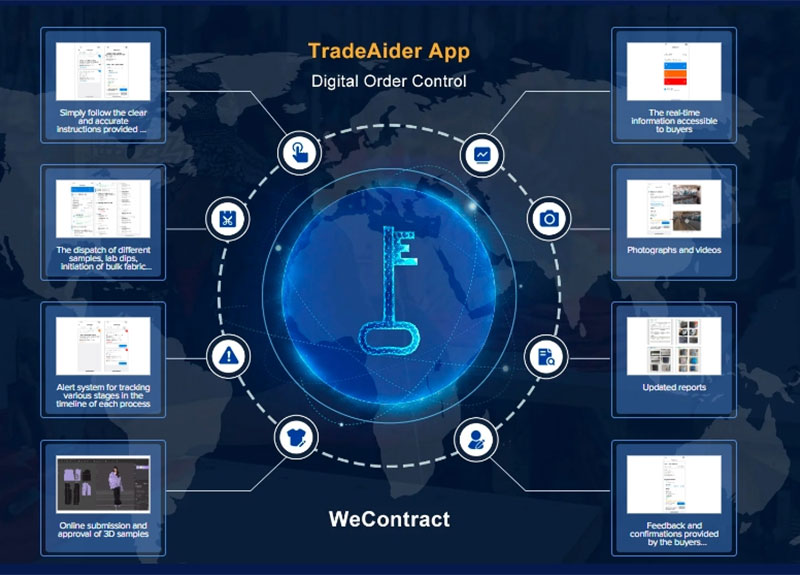Globalization, as an important feature of today's era, is profoundly affecting the trend of commercialization. With the gradual reduction of international trade barriers, companies can more easily enter the global market and expand their potential customer base. This change brings unprecedented business opportunities for companies, but also intensifies market competition. Globalization also promotes the global allocation of resources, allowing companies to more flexibly access high-quality resources around the world, such as raw materials, technology, and talent, thereby enhancing production efficiency and product competitiveness.
Extension and complexity of supply chain: With the advancement of globalization, the supply chain of enterprises is gradually extended to involve more countries and regions. This cross-regional supply chain increases the complexity and difficulty of management, requiring enterprises to have stronger cross-cultural communication and coordination capabilities.
Increased risks and uncertainties: Globalization has exposed supply chains to more external risks, such as geopolitical changes, exchange rate fluctuations, and changes in international trade policies. These risk factors may lead to supply chain disruptions and affect the normal operation of enterprises.
The demand for technological innovation is increasing: in order to improve the efficiency and transparency of the supply chain, enterprises need to continuously introduce new technologies, such as the Internet of Things, big data, and artificial intelligence. The application of these technologies can help enterprises monitor the dynamics of the supply chain in real time, optimize inventory management, reduce waste, and respond quickly to market changes.

Direct sourcing refers to the procurement method where the purchasing party directly engages with the manufacturer at the source of the materials. In this procurement model, the leading party is typically the purchasing organization or enterprise that needs the materials or services. The purchasing party directly negotiates with the supplier, eliminating the need for intermediaries or agents, thus reducing intermediate links and improving procurement efficiency.
1.Requirement Analysis and Planning: Firstly, the buyer needs to clarify their own needs and develop a procurement plan. This includes determining the type, quantity, specifications, and budget of the required materials.
2. Supplier selection and inquiry: The buyer selects the appropriate supplier through market research and sends an inquiry request to them. In this step, the buyer needs to compare the price, quality, delivery time, and other factors of different suppliers to select the optimal one.
3. Quotation comparison and negotiation: After receiving supplier quotations, the purchasing party needs to compare the quotations from different suppliers and may negotiate with the suppliers to strive for more favorable prices and conditions.
4. Contract signing: After determining the supplier, the purchasing party needs to sign a procurement contract with the supplier. The contract should specify the rights and obligations of both parties, including the specifications, quantity, price, delivery date, and payment method of the materials.
5. Order placement and tracking: According to the contract, the sourcing party places an order with the supplier and tracks the execution of the order. This includes ensuring that the supplier delivers on time and inspects the quality of the materials.
6. Acceptance and Warehousing: After receiving the materials, the buyer needs to conduct acceptance to ensure they meet the specifications and quality agreed upon in the contract. After passing the acceptance, the materials are warehoused and payment is made according to the payment method stipulated in the contract.
1. Supplier selection: Choosing a reputable and quality-assured supplier is key. The buyer should conduct a comprehensive assessment of the supplier's production capacity, quality control capabilities, and delivery guarantee capabilities.
2. Price fluctuations: Market prices may fluctuate due to various factors, such as raw material costs, supply and demand relationships, etc. The buyer should closely monitor market dynamics and establish long-term stable cooperative relationships with suppliers to address the risks posed by price fluctuations.
3. Quality control: The buyer should specify the quality standards and requirements for materials in the contract, and conduct strict quality inspections at the time of receipt. For non-conforming products, timely communication with the supplier should be conducted and solutions should be sought.
4. Delivery date guarantee: Ensuring that suppliers can deliver on time is crucial for the buyer. The buyer should specify the delivery deadline in the contract and establish corresponding default clauses to bind the supplier.
Establish a supplier evaluation system: Regularly assess suppliers, including quality, price, delivery time, etc., in order to timely adjust direct sourcing strategies.
Diversified sourcing channels: Do not overly rely on a single supplier, and establish diversified sourcing channels to reduce supply chain risks.
3. Strengthen communication and collaboration: Maintain good communication and collaborative relationships with suppliers, promptly resolve issues that arise during the procurement process, and ensure the smooth progression of sourcing activities.
4. Focus on the training of procurement personnel: Enhance the professional quality and negotiation skills of procurement staff to better complete procurement tasks and secure more benefits.
Out sourcing refers to a business model where an enterprise entrusts all or part of its purchasing activities to professional purchasing service providers. Under this model, the enterprise can focus on its core business while leaving non-core purchasing tasks to a professional team.
Out sourcing usually occurs in the following situations:
1.When a company needs to reduce purchasing costs and improve purchasing efficiency.
2. When the internal purchasing resources within the enterprise are limited and external professional support is required.
3.When an enterprise wishes to focus on its core business and out sourcing non-core operations.
4. When searching for higher quality suppliers or products in the global market.
The main reason behind these situations is to optimize resource allocation, improve efficiency, and reduce costs.
1. Adaptability to market changes: Out sourcing can help enterprises adapt to market changes more quickly, as professional purchasing suppliers usually have more extensive market information and supplier networks.
2. Cost control: Through economies of scale, professional skills, and optimized supply chains, out sourcing often achieves lower procurement costs.
3. Quality Management: Professional sourcing service providers typically have a more stringent quality management system in place, thereby enhancing the quality of purchased products and services.
1. Requirements analysis: Define the specific content, objectives, and requirements for out sourcing.
2. Supplier selection: Evaluate and select the appropriate service provider for out sourcing.
3. Contract signing: Sign a detailed service contract with the selected supplier.
4. Service execution: The supplier conducts procurement activities according to the contract requirements.
5. Performance evaluation: Regularly assess the service quality and effectiveness of suppliers.
Advantages: Cost savings, efficiency improvement, quality enhancement, focus on core business.
Challenges: Risk in supplier selection, information security issues, and increased difficulty in internal management coordination.
1. Selection of suppliers: It is crucial to choose suppliers with professional capabilities and good reputation.
2. Contract management: Ensure that the contract terms are clear and the rights and interests of both parties are protected.
3. Risk management: Identify and assess potential risks, and develop corresponding strategies to address them.
4. Information confidentiality: Ensure that sensitive corporate information is not disclosed.
5. Service Quality Monitoring: Establish an effective performance evaluation mechanism to ensure that suppliers provide high-quality services.
Out sourcing is an effective business model that helps enterprises maintain competitiveness in a complex and ever-changing market environment. Meanwhile, the first-party enterprise also needs to carefully select suppliers and strengthen contract management and risk control.

TradeAider’s WeContract Service is an exceptional turnkey contract"sole agent" service in the form of a strategic alliance. Through WeContract Service, TradeAider can help buyers achieve the goal of cost reduction, quality enhancement and margin expansion effectively in two ways: a) make the best use of the over 95% factories which do not have chance to have direct business with buyers BUT have good capacity, lower prices, wider product ranges, hard working workers and can also be more cooperative; b) give full play to TradeAider's advantages of the cost-effective vast network of 80,000 quality control and product development specialists worldwide and the efficient digital system of the supply chain management. All these innovative measures not only lead to the internal cost saving within TradeAider but also result in bringing the most competitive products to buyers. In the event of any issues, TradeAider assumes full responsibility.